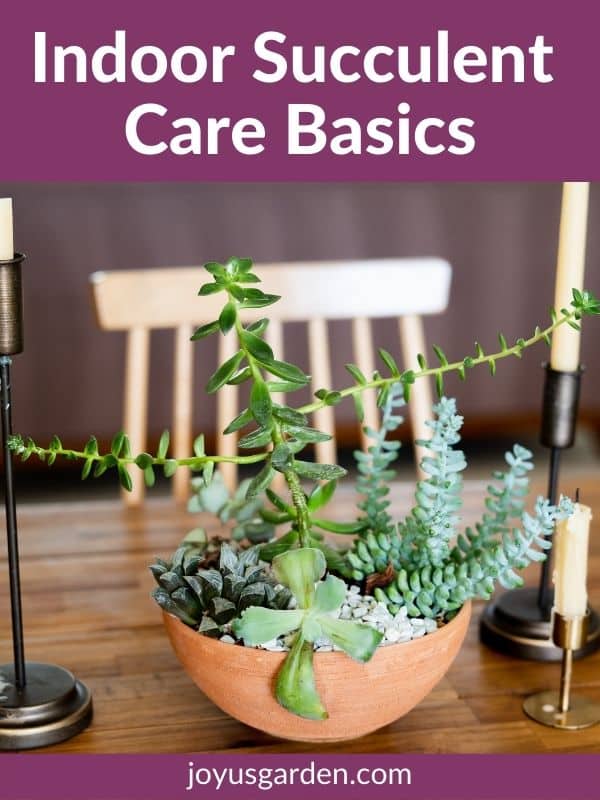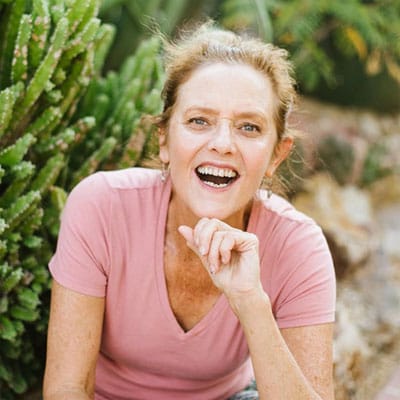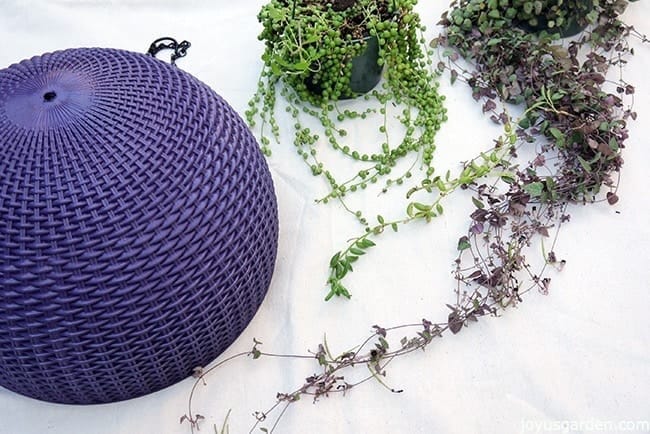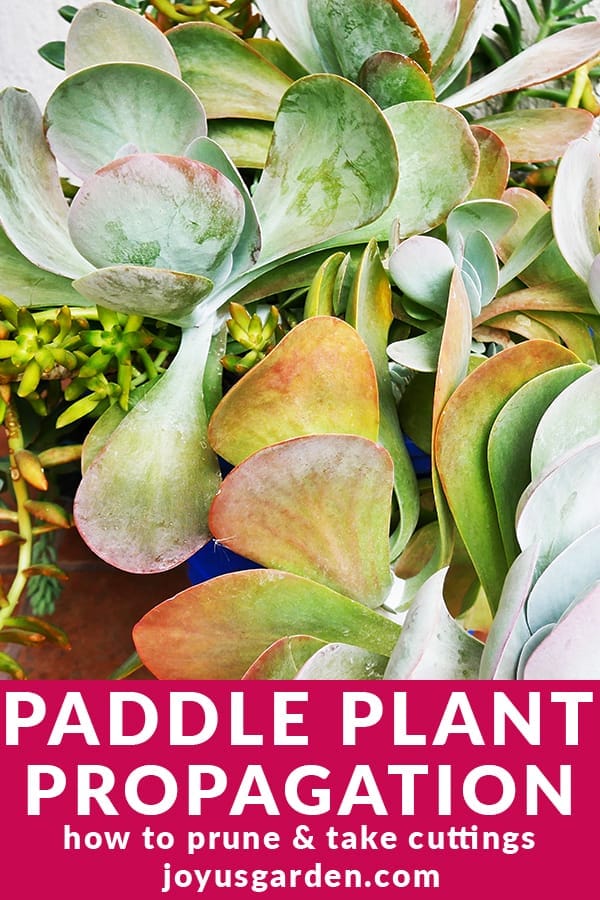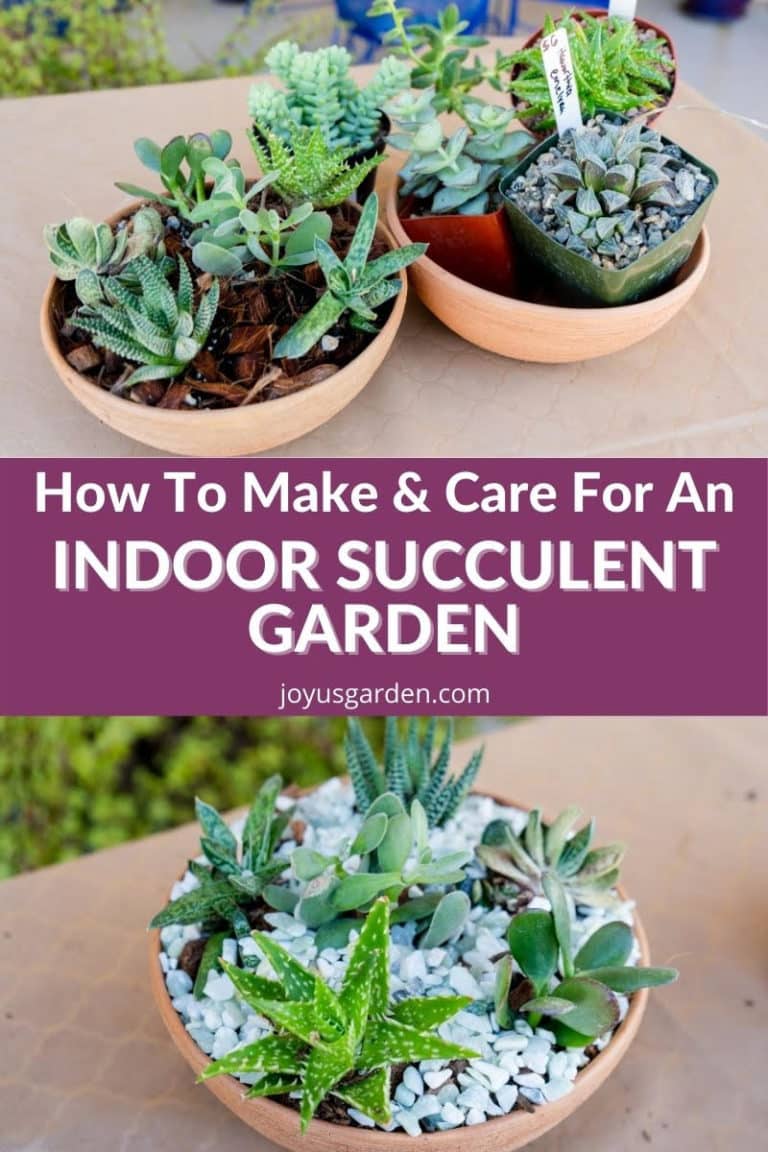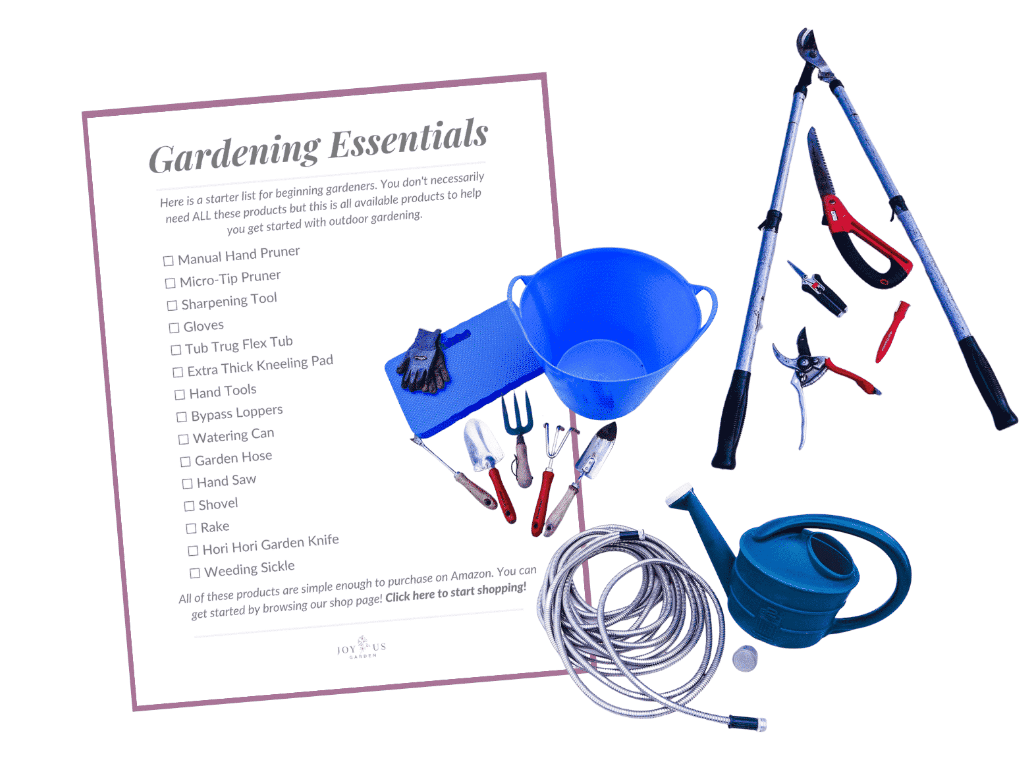Indoor Succulent Care: How To Grow Succulents FAQs
Succulents are ideal houseplants for beginners and anyone who desires low maintenance greenery in their homes. Succulent care is relatively easy but newcomers still have a lot of questions. Let’s go over indoor succulent care basics and answer your FAQs.
Indoor Succulent Care: Answers To FAQS
Choosing The Right Succulents
Jade Plants, Aloe Vera, Snake Plants, Ponytail Palms, Christmas Cacti, Flowering Kalanchoes, Calandivas, Haworthias, and Gasterias have proven best for me. String Of Pearls are very popular, but people have problems growing them. String Of Bananas is a similar plant that’s easier to keep alive indoors.
The majority of succulents are easy to care for. However, too much water and too little light can cause them to die. See the above answer.
No succulents will do well in low light. I’ve found that Snake Plants, Haworthias, and Gasterias are the best bets in lower light situations. There are many different varieties of Snake Plants and Haworthias to choose from. Gasterias do great indoors, but they’re a bit harder to find.
Helpful Link: Indoor Succulent Plants: How To Choose Plants & Containers
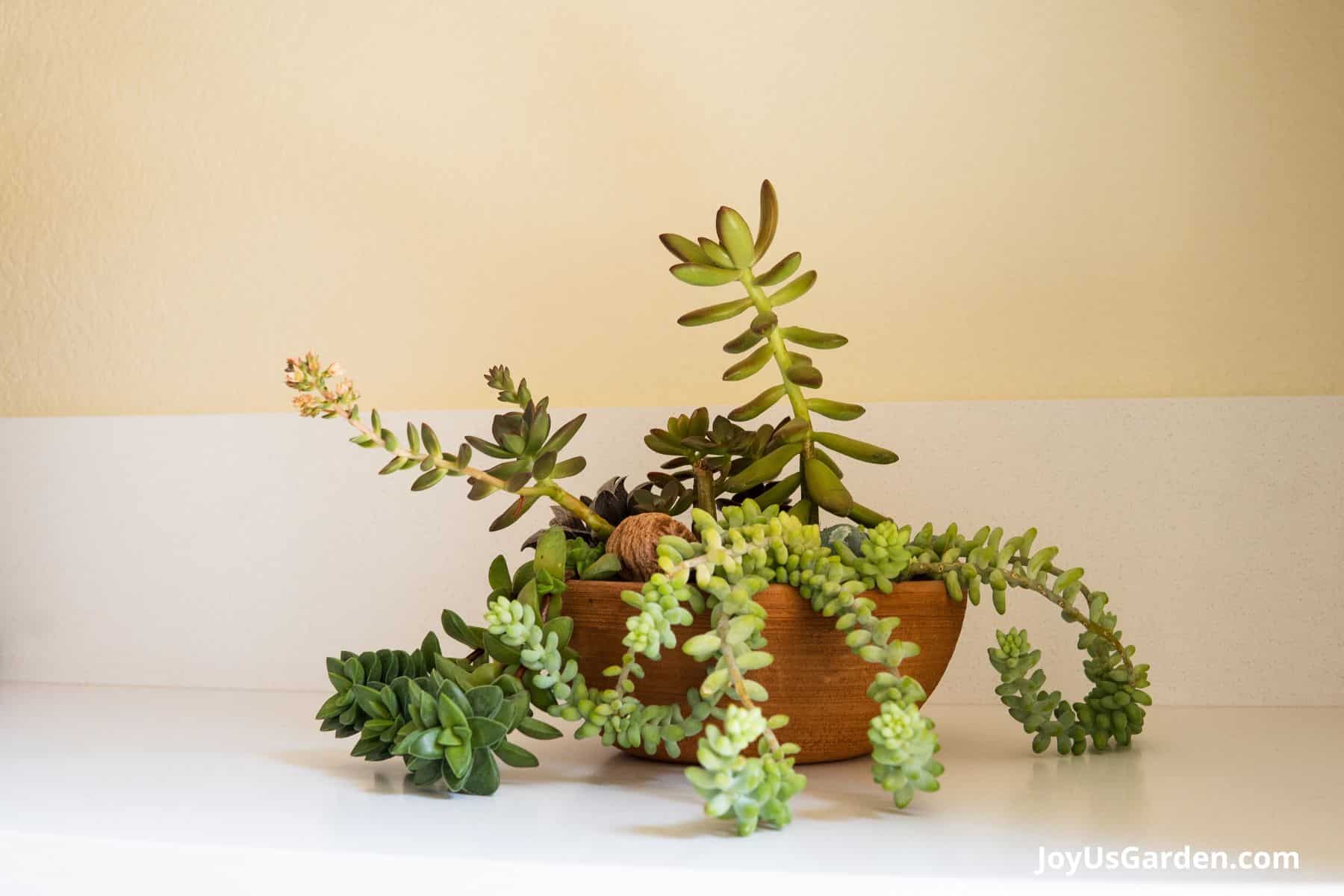
Light Requirements
They like lots of light. Full sun is fine as long as it’s not direct, and a sunny spot is great if it’s not in a hot window.
If a succulent isn’t getting enough light, it’ll become thinner, weaker, and eventually leggy. The foliage will be smaller and paler. It will grow towards the closest light source, giving it that “Leaning Tower of Pisa” look.
Bright indirect light is best. Prolonged exposure to direct sunlight will burn them. You want to keep your succulents out of a west—or south-facing window. I live in sunny, hot Tucson, AZ, and keep my succulents at least 2′ away from this exposure. A north—or east-facing window is fine for my succulents.
Succulent leaves and stems will burn. Mild sunburn will be whitish in color, whereas an intense burn will be brown.
Most indoor plants don’t receive light on all sides because they grow close to a wall. So yes, rotating your succulents every couple of months is a good idea.
Helpful Link: How Much Sun Do Succulents Need?
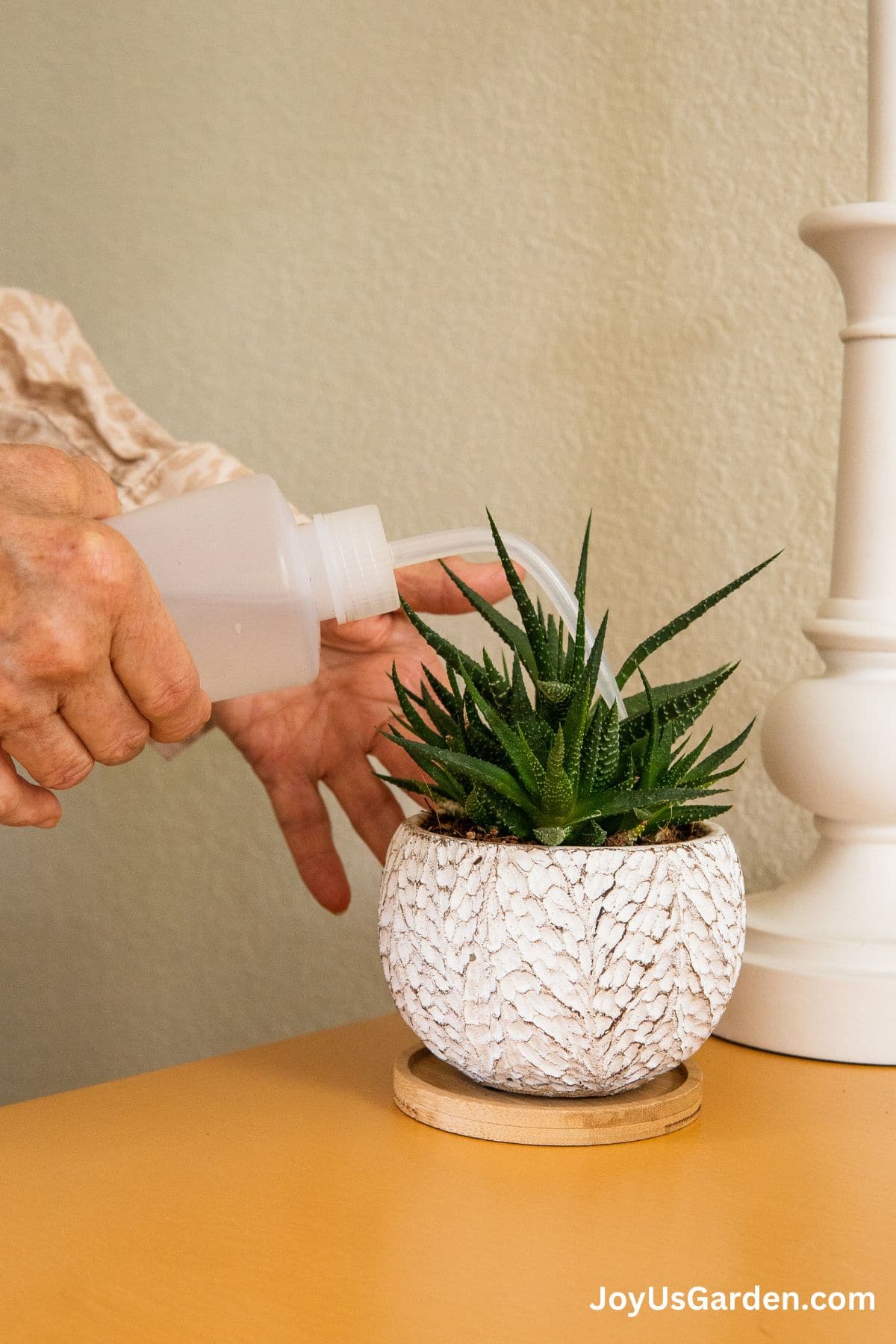
Watering Succulents
When it comes to succulents, less water is better than more water! I can’t give you a specific schedule because many variables come into play. The complete guide below will help you out.
Too much water will do in a succulent fast. Let the soil dry out before watering again. Make sure they’re planted in succulent mix, and the pots have drainage holes so excess water can flow out.
Succulent leaves are firm. If overwatered, they’ll turn soft and mushy. Also, they can turn translucent and pale, as well as yellow and/or brown.
No. Their fleshy leaves don’t need it, and it could cause the soil to stay too wet. Save the spray bottle for your tropical plants!
It’s best to reduce watering frequency during the winter months. The days are shorter and darker, and the soil doesn’t dry out as fast.
Helpful Link: A Guide To Watering Succulents Indoors
Temperature/Humidity
I grew many succulents outdoors in my Santa Barbara garden. I have about ten pots of them growing in my Tucson garden. They can handle a wide range of temperatures, ideally above 40F and below 90F. They’ll do fine temperature-wise in your home.
My home in the Arizona desert is air conditioned for roughly four months each year. I keep the thermostat set anywhere from 77F to 80F. They’ll be fine unless you keep your home or office at cold temperatures year-round.
Most succulents are native to dry climates. I don’t know their ideal humidity, but they handle the low humidity in my home just fine.
Helpful Link: 6 Important Succulent Care Tips
Fertilizing/Feeding
Succulents aren’t needy, but they’d appreciate the nutrient boost. During the growing season is the best time to do it.
How often you feed your succulents depends on what fertilizer you’re using and your climate. I live in a sunny climate with a long growing season. During this period, I feed my succulents monthly (seven times). Two to three times might be fine for your succulents and growing zone.
I like a water-soluble fertilizer, either liquid or granular. I don’t use a special fertilizer; I use the same ones I use for all my other houseplants.
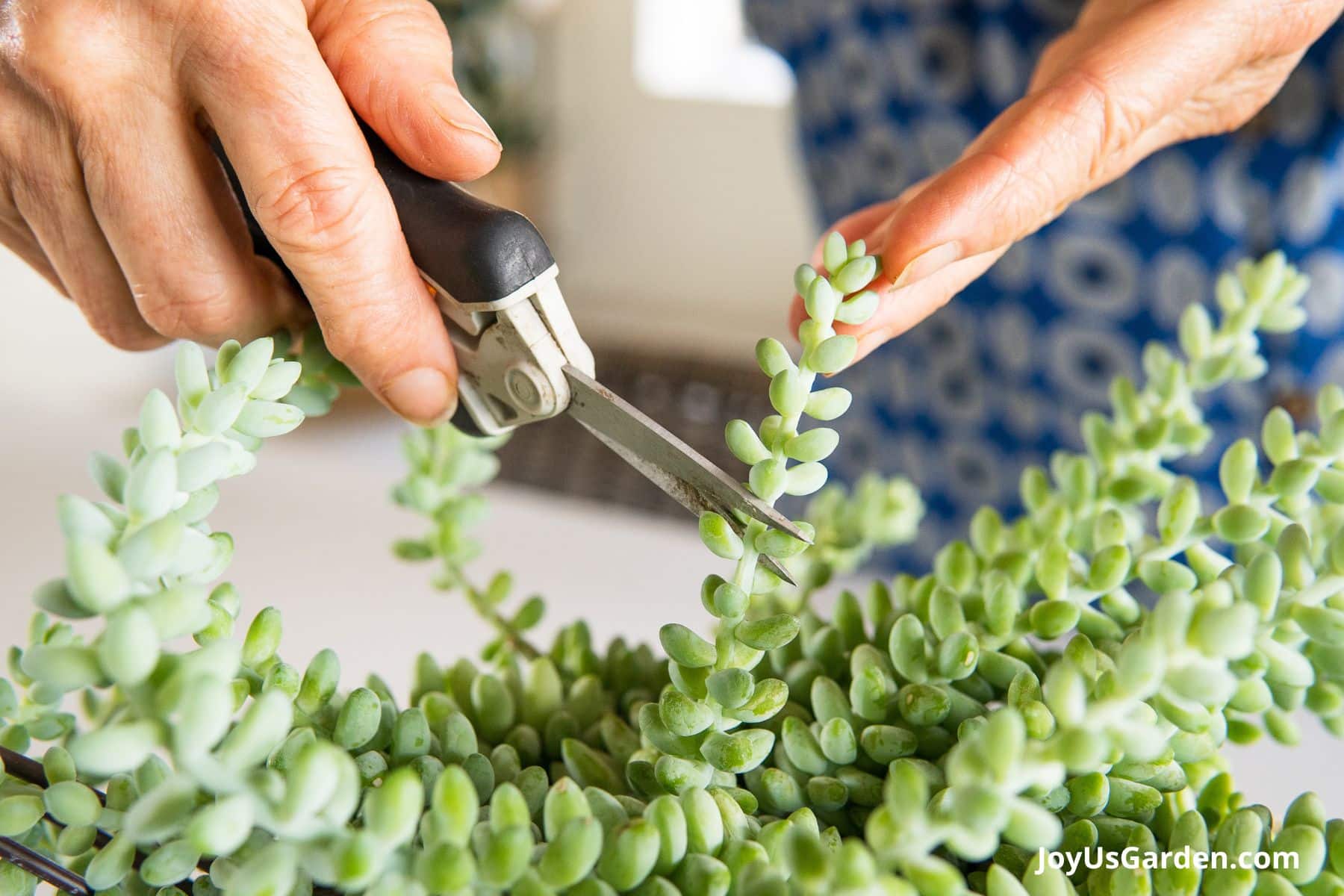
Pruning
Pruning is the best method. How you prune a succulent depends on the type and what you want to achieve.
I use my Felco pruners or my Fiskar micro pruners, depending on the thickness of the stem.
No. Some succulents won’t need any, and some will.
Yes, during the growing season is best.
Not that I know of, unless you’re working with a Pencil Cactus. Make sure your pruning tools are clean and sharp.
Helpful Link: How To Prune Succulents
Propagating Succulents
My two favorite ways are by stem cuttings in mix and by division.
Cuttings are a faster way. Leaf cuttings take much longer. Check the helpful link below.
Like pruning and fertilizing, spring and summer into early fall is best.
Stem and leaf cuttings and division can propagate most succulents. Research the succulent you have to determine the best method.
How long does it take for propagated succulents to root and grow into new plants?
Generally, when it comes to stem cuttings, I’ve found that it can take four weeks or more for succulents to begin to root. Some take shorter; some take longer.
Yes. Put them in a bright spot with lots of light but no direct sunlight. Keep them dry for five to seven days before watering.
Helpful Post: 3 Easy Ways To Propagate Succulents
Succulent Soil
Succulent soil needs good drainage and aeration. Using the proper mix ensures healthy roots, which contribute to a healthy plant. A mix formulated for succulents and cactus is best.
It’s best not to. Regular potting mix holds water, and succulents don’t like too much moisture. Use a well-draining succulent soil mix.
Yes, most of them are labeled as succulent and cactus mix.
Helpful Links: Succulent Soil Mix: The Best For Succulent Plants / Succulent & Cactus Soil Mix: A DIY Recipe.
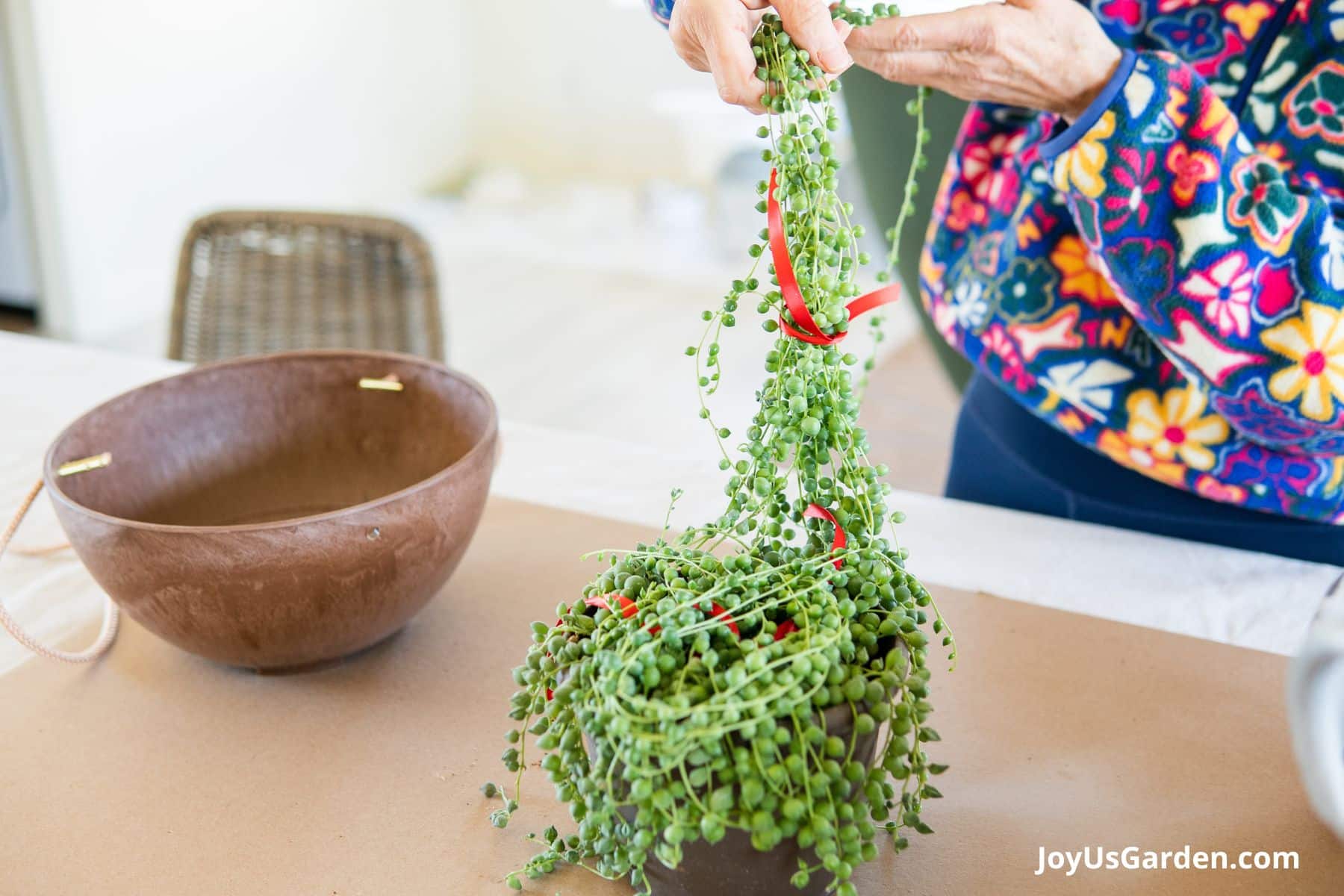
Repotting
Here are some reasons to repot: the soil is depleted or older than three to four years, the plant looks stressed and/or has stopped growing, the roots are growing out of the drain holes, it’s planted in the wrong type of soil, or there is white salt buildup on the surface of the soil.
Succulents don’t mind growing tight in their pots. Generally, go up one pot size, for instance, from a 4″ pot to a 6″ pot. If you’re dealing with a heavy Jade Plant or Aloe Vera, it will need a bigger base to anchor it.
If the soil mix isn’t older than two years and doesn’t look depleted, yes. You might consider mixing in a bit of compost to add nutrients.
This is simple: I put the plant in a bright growing spot, let it settle in dry, and water it after five to seven days. Then, I resume care as usual!
Helpful link: A Guide To Repotting Succulents
Problems Growing Succulents
Succulents grown indoors are prone to pests, especially mealybugs. They can also be prone to spider mites, scale, and aphids. If the infestation is mild, a spray with the kitchen faucet or garden hose will get rid of them. For heavier infestations, I use insecticidal soap. Click on the link for each pest for more info.
Succulents love bright light. They’ll reach toward the light source if they’re not getting enough. Move them to a spot with more light to prevent this. If need be, rotate them so they can light on all sides.
First reason, see the above answer. The second is the nature of the succulent. For example, kalanchoes and echeverias tend to grow long stems over time.
Succulents won’t survive long in soggy soil. The biggest issue people have with growing succulents is too much water. Make sure your succulents get enough light, are planted in the proper mix, and dry out between waterings. If the soil stays too wet, it’ll be prone to fungus gnats.
Any plant will occasionally produce yellow leaves. It’s part of its growth process.
However, an excessive amount of yellow leaves is a sign that the succulent isn’t happy. The cause could be overwatering, underwatering, too much fertilizer, too much light or not enough light, and/or poor soil drainage. Watering too often is the most common reason. You can remove any yellow leaves to keep the plant looking good.
Helpful Link: 13 Problems You May Have Growing Succulents Indoors
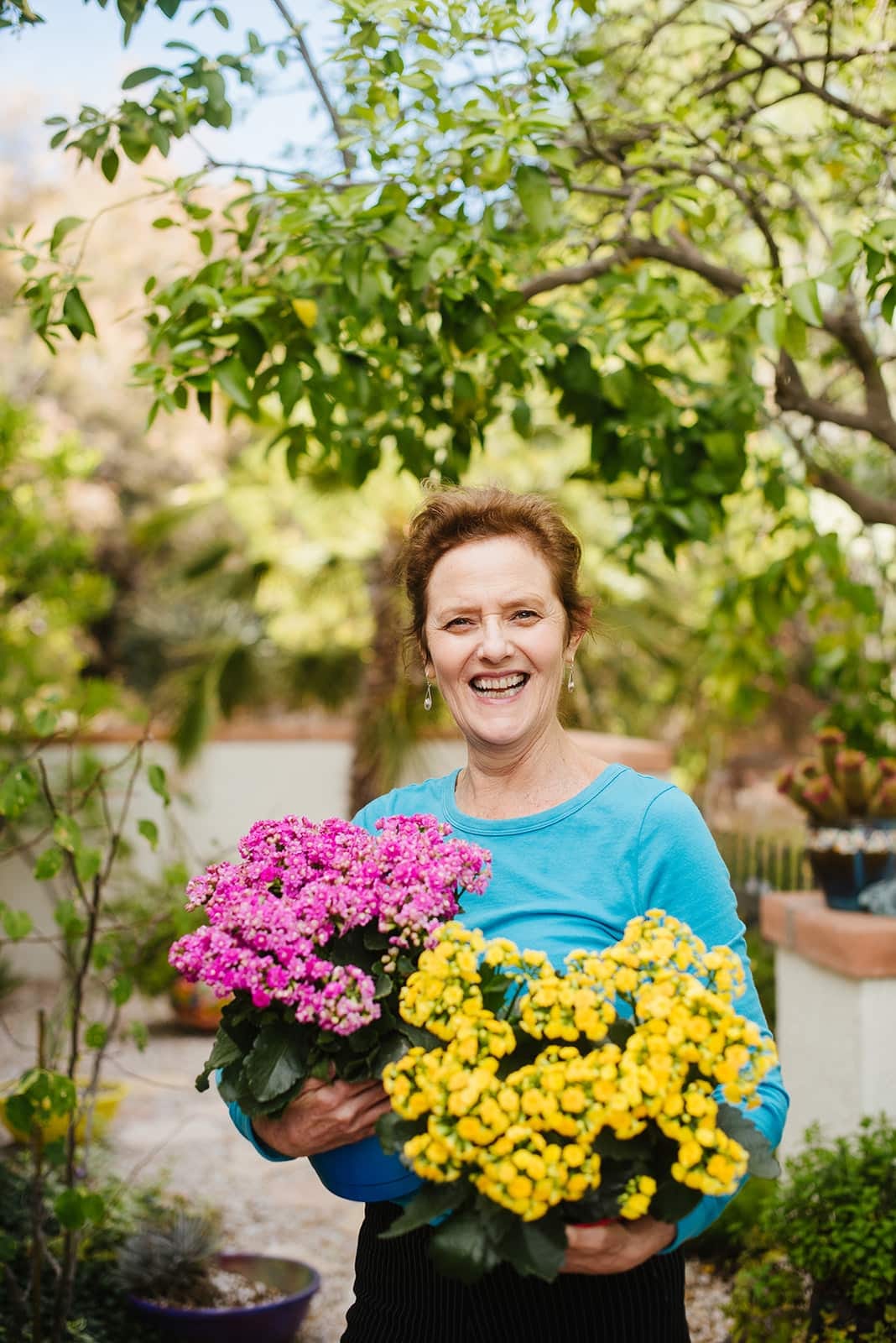
Container Selection
Most succulents like to grow tight in their pots. Make sure the pot you choose isn’t too big. Too much soil mass could lead to root rot. It’s best to have drainage holes on the bottom of the pot so the excess water can flow out.
If you’re dealing with a larger, heavier succulent, the base will need to be bigger. The plant’s size and weight will determine the container’s size.
They look great in terrariums, but no. Succulents need good airflow. I’d save the terrarium for plants that like high humidity and grow better in that environment.
If you’re new to growing succulents, no. They need excellent drainage and to dry out between waterings.
Yes, you can. Most succulents require the same light requirements and are cared for similarly. Some succulents will crowd the others out as they grow, and you’ll need to remove or repot them.
They can. The ones that trail look great in hanging baskets or on hanging shelves. Examples are String Of Pearls, Burro’s Tail, String Of Bananas, String Of Hearts, String Of Dolphins, and Christmas Cactus. Here’s a post showing you 7 Hanging Succulents.
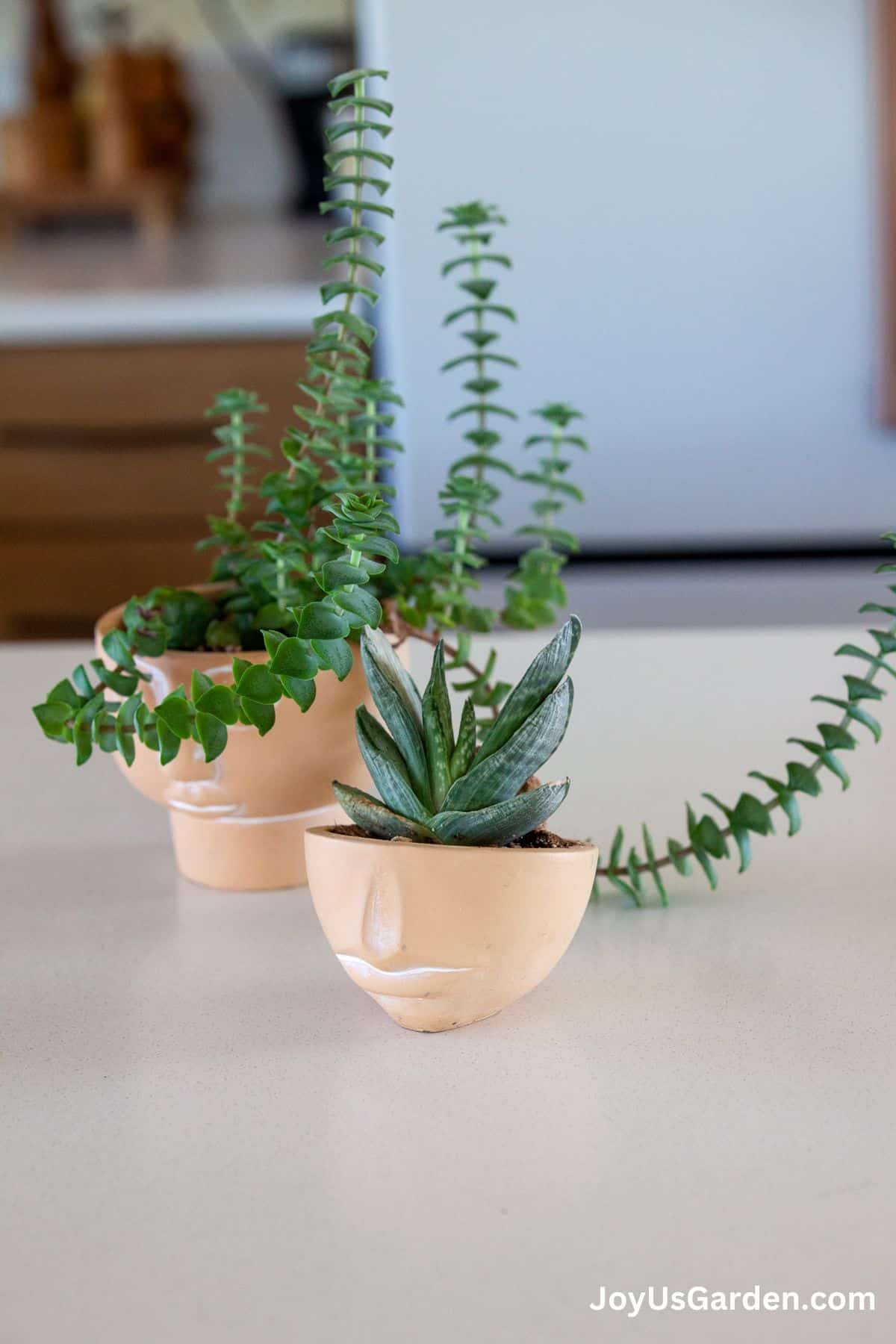
Displaying Succulents
Yes, you can. It’s a nice look. Use a thin layer and avoid mounding it up against the base of the succulent. If you pile them on too thick, the soil will dry out slowly, which could lead to root rot.
There are many ways—succulents are fun to play with! What is important is that succulents get enough light. This post on different ways to hang succulents will inspire you. If you care to make a wreath, here’s a succulent wreath DIY. They look great planted together in shallow planters.
Succulents grow in a wide variety of containers. I think they look best in clay and terracotta pots. They’re also suited to a dish garden, low bowl, hanging pot, or hanging shelf. Just make sure the containers aren’t too big and use the proper soil mix. Here’s a post on planters for indoor succulents to give you an idea of the variety.
Yes. Succulents work well in indoor decor because they hold up much better and longer than cut flowers and greenery. I’ve seen them used in Christmas and fall arrangements and Easter and summer decor. They’re very popular in the wedding business and look beautiful in bouquets. Here’s a DIY on making Christmas succulent arrangements in pots.
Check out our succulents category for lots more info on growing succulents indoors and outdoors.
Pet Safety
Most houseplants are toxic in some way. Some succulents are, and some aren’t. This list of pet-safe succulents will help you out. Popular non-toxic succulents include Christmas Cactus, Burro’s Tail, and Haworthias.
You can display them on surfaces up high, hanging shelves, or hanging wall planters.
I have a large indoor succulent collection and appreciate their easy, breezy nature. I hope this helps and gets you hooked on succulents, too!
Happy gardening,

